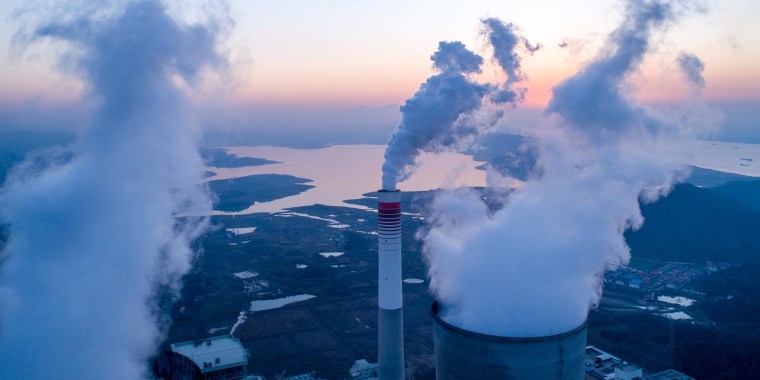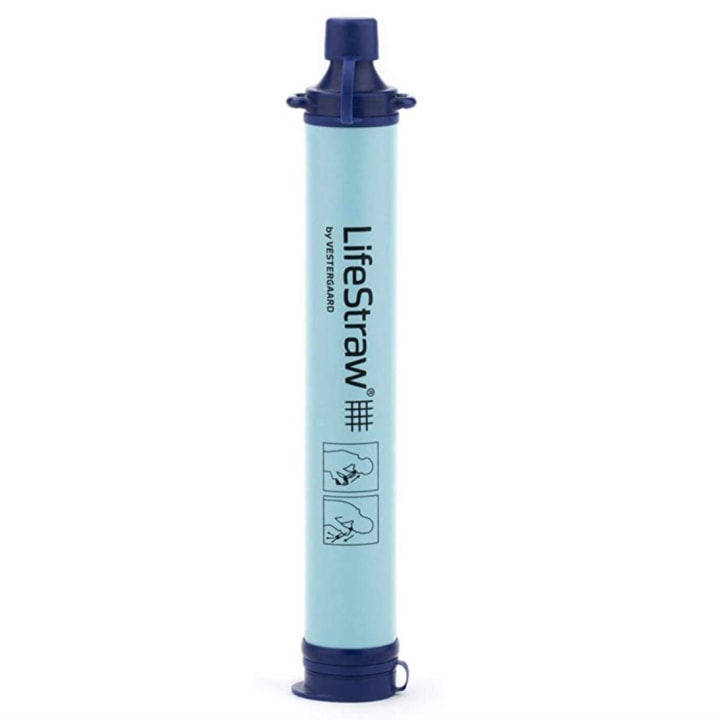In April, Amazon’s The Climate Pledge officially reached 100 signatories, among them big name brands like Visa, Verizon and Best Buy. Amazon was the first signatory of The Climate Pledge — a commitment to cut down carbon emissions. The mega retailer co-founded it in 2019 alongside Global Optimism, an advisory organization that advocates for reducing carbon emissions. The Climate Pledge is one of several sustainability endeavors at Amazon.
- The similar-sounding Climate Pledge Friendly product label you’ll see throughout its site, indicating that a product is made in a way that’s more eco-friendly.
- Its Shipment Zero plan is designed to reduce emissions from deliveries.
SKIP AHEAD Climate Pledge signatories and their popular products
Dubbed by the National Retail Federation as the second largest retailer on the planet (Walmart holding the top spot), Amazon has been criticized for its environmental impact, focus ranging from its one- and two-day shipping policies to its packaging and delivery routes. Much of the attention on Amazon’s environmental effect centers around the company’s carbon footprint. The greenhouse gases involved in the manufacture, use and breakdown around commerce can trap heat in the atmosphere and ultimately warm up the Earth, one of the biggest concerns informing the current climate crisis. Simply put: Decreasing carbon emissions, or minimizing any given carbon footprint, reduces the amount of greenhouse gases warming the planet.
In signing the pledge, then, Amazon and cohorts commit to becoming net zero carbon, tangentially promising they’ll measure, reduce and offset any carbon emissions.
The commitment is not legally binding, nor does it carry any penalty for violating it otherwise. So, why does it matter? Ahead of Prime Day 2021, set to run on June 21 and June 22, we consulted experts about what The Climate Pledge achieves, what it means to shoppers and what its limitations are.
How Amazon’s Climate Pledge came to be — and why it matters
In 2019, Amazon released its first ever carbon footprint report, measuring emissions from its direct and indirect operations (think third-party transportation) in 2018. The following year, Amazon announced its carbon footprint rose 15 percent from the year before. The general goal of the The Climate Pledge is to completely cut carbon emissions by 2040.
That’s 10 years ahead of the deadline imposed by the Paris Agreement, a legally-binding international effort to become climate neutral by mid-century (2050). It was big news when the U.S. withdrew from the agreement under former President Donald Trump in 2017 and made headlines again once the U.S. rejoined it in February under President Joe Biden.
There’s currently no government oversight on being net zero or carbon neutral in the U.S. — companies can claim whatever they want. Amazon, along with tech giants Facebook and Google, recently urged the Securities and Exchange Commission to mandate regular climate reports to shareholders.
Amazon has “an unfathomably large” carbon footprint so carbon reductions can make a difference, explained Jennifer Rushlow, associate dean of environmental programs at Vermont Law School, adding there’s still “suspicion that Amazon is using the Climate Pledge as a marketing ploy.” For its part, Amazon told us that it’s “committed to using its size and scale to make a difference in preserving the natural world.” But the company also added that it “cannot do this alone,” highlighting its role in co-founding The Climate Pledge.
It’s likewise up to other companies who signed to remain transparent about emission reductions to meet that 2040 target “so we can all see whether the pledge is worth more than the paper it is written on,” noted Pamela Chasek, a professor and chair of the political science department at Manhattan College.
Climate Pledge signatories and their popular products
Signatories of The Climate Pledge span industries from aviation (Alaska Airlines) to automotive (Mercedes-Benz). Here’s the full list of signatories.
In April, Amazon announced 52 new signatories. Since then, new signatories include media brand Interpublic Group, asset management company Iron Mountain and real estate group JLL. To give you an idea of the companies involved, we listed a few relevant shopping destinations below in alphabetical order, along with some of their popular products.
Best Buy
Best Buy was among one of the earlier brands to join the pledge, enlisting on Sept. 23.
Insignia 5-Quart Digital Air Fryer
One of Best Buy’s own brands, the Insignia line spans TVs, appliances and computer accessories. Air fryers have been popular with Shopping readers and this is another highly rated model to consider if you’ve been in search of one. It boasts an average 4.7-star rating over more than 3,300 reviews. The all-in-one appliance allows you to fry, roast and bake while featuring preprogrammed cook times and temperatures for foods like fish and chicken. It also includes an automatic shutoff timer and stainless steel finish and is dishwasher-safe.
Colgate-Palmolive
Colgate-Palmolive was part of the most recent batch of brands to join the pledge in April.
EltaMD UV Clear Facial SPF 46 Sunscreen
Colgate-Palmolive’s roster of brands includes toothpaste brands Colgate and Tom’s of Maine, along with cleaning company Fabuloso and skin care label Elta MD. EltaMD’s UV Clear Facial SPF 46 Sunscreen has been a favorite of Shopping readers, among the most purchased of this year so far. More recently, one board-certified dermatologist recommended it in our guide of sunscreen for all skin types, favoring it for acne-prone faces. Its formula is unscented and designed to protect from UVA and UVB rays (otherwise known as broad-spectrum coverage). It’s the No.1 bestseller for facial sunscreens on Amazon, earning an average 4.7-star rating over more than 20,000 reviews.
Lifestraw
Lifestraw is part of the more recent group of signatories, joining the pledge on April 21.
Original Lifestraw
The brand is well-known for its filtering and purifying water products. Along with the pledge, Lifestraw is also a Climate Neutral certified brand, committed to retroactively reducing its 2020 carbon emissions throughout this year. For those who are outdoorsy, the Original Lifestraw is designed to help remove bacteria, dirt and sand, filtering them out for clean water. It currently comes in Blue and Green. You can also choose to buy it in bulk — it’s available in packs of two, three, five and six. This personal water filter boasts an average 4.8-star rating over more than 72,300 reviews.
MiiR
MiiR joined the pledge earlier this year on Feb. 17.
MiiR Insulated Tumbler
MiiR makes tumblers, bottles and other drinkware. The company is also Climate Neutral certified for 2021. This tumbler features double-walled insulation, a stainless steel construction and a press-on lid that’s meant to to prevent splashes and keep drinks warm longer. It currently comes in five sizes ranging from 6 ounces to 20 ounces and colors like Prismatic, Stainless and Black. This tumbler has an average 4.7-star rating over more than 800 reviews on Amazon.
Philips
Personal care company Philips was another recent addition to the pledge, joining on April 21.
Philips Sonicare DiamondClean Smart 9700 Electric Toothbrush
Philips carries oral care products like toothbrushes, grooming products like shavers and even a line of small kitchen appliances. One of the best electric toothbrushes, this model from Philips can be connected to an app to have what one dentist described as “personalized coaching to show you not only how to brush properly, but what surfaces of the teeth you are missing.” It features five brushing modes and three intensities. The toothbrush also comes with a glass charging case and travel case. It’s a popular pick on Amazon, earning an average 4.6-star rating over more than 1,300 reviews.
How Amazon’s Climate Pledge works
The pledge boasts a total of 108 signatories as of publish time, including Shopping reader favorites like Best Buy and Philips. There’s no fee to join The Climate Pledge (nor a fine for breaking it). Those who sign it agree to three broad commitments: regular reporting, carbon elimination and credible offsets.
Regular reporting
More recently, Amazon was one of the tech giants pushing for the Securities and Exchange Commission to require businesses to regularly report climate-related issues to shareholders. And over the years, it’s become a sort of trend for companies vowing (and vying) to become carbon neutral.
Signatories are expected to routinely measure and report greenhouse gas emissions. The pledge doesn’t define how signers can go about this but encourages companies to “use existing, robust greenhouse gas reporting standards” like the Greenhouse Gas Protocol (GHG) — which informs a similar effort called Climate Neutral, among other efforts — and to count both direct and indirect sources of emissions.
For its part, Amazon says its carbon footprint “meets the widely adopted international standard of the GHG Protocol” and is independently audited and verified by Apex, an environmental consulting company. Amazon also joined the Science-Based Targets Initiative last year to set goals on reducing emissions that are aligned with the Paris Agreement (brands like Apple and J.Crew are committed to this initiative, too).
Carbon elimination
Signers must focus on decarbonization efforts, removing them from their operations — including through the energy, transportation and packaging they’re using.
For example, Amazon plans on completely powering all of its business with renewable energy by 2025 and says it has reached 42-percent renewable energy across its business in 2019. The company has purchased 100,000 electric vehicles to use in cities like San Francisco and Los Angeles, with plans to expand to 14 more cities this year, said Adam Werbach, the global lead for sustainable shopping at Amazon.
Credible offsets
The final part of the pledge involves offsetting any leftover carbon emissions. “Net-zero emissions mean that carbon emitted will equal carbon removed — though the idea is that the levels of emissions will come down,” explained Nives Dolšak, a professor of marine and environmental affairs at the University of Washington.“This allows companies to continue emitting carbon dioxide as long as they find ways to remove the same amount of carbon from the atmosphere and store it.”
The text of the pledge doesn’t specify how to offset these emissions — only noting that these should be “quantifiable, real, permanent, and socially-beneficial offsets” and that simply buying offsets “won’t cut it.” The pledge points to “natural-based solutions like forest conservation and reforestation” to help remove and store away carbon.
Challenges facing Amazon’s Climate Pledge, according to environmental experts
Amazon describes its commitments to reaching net zero carbon as “ambitious” — experts we spoke to agree.
The supply chain
While the pledge is a “positive step,” the company could be doing more to reduce Scope 3 emissions, “the toughest of all” to bring down, argued Aseem Prakash, a political science professor who specializes in environmental politics and sustainability at the University of Washington. These emissions account for activities in the supply chain, the consumers using the company’s products and the resulting impact of that, according to Prakash. They also account for most of Amazon’s carbon footprint. Teams across the company are “taking a broad, science-based approach to measuring, reducing and eliminating carbon emissions in our operations,” the retailer told us.
“It will be challenging to reduce emissions across Amazon’s supply chain in particular, but it’s necessary for our future,” said Tensie Whelan, director of New York University’s Stern Center for Sustainable Business.
Shipping
She pointed out that Amazon’s quick shipping is “massively greenhouse gas-dependent,” as is the packaging used. Amazon claims that its faster delivery speeds “actually generate lower carbon emissions” given they ship from regional fulfillment centers “that are very close to the customer using ground transportation.”
It’s true that online shopping can create a slightly smaller carbon footprint than in-person shopping, as Vox has previously covered. But the retailer also seems to be moving faster on that front, as well. For example, it has promised that 50 percent of Amazon shipments will be net zero carbon as early as 2030 — part of its aforementioned Shipment Zero delivery plan. It also ordered 100,000 electric delivery vehicles to save “millions of metric tons of carbon per year by 2030,” the company told us.
Collaboration
For Amazon to “truly address its impact,” though, Whelan suggested it work with “vendors for products on its platform to reduce the carbon footprint of their products and refuse to carry products that have high carbon footprints.”
Amazon said the Climate Pledge Friendly label is a “step further” in sustainability, doing “the hard work on behalf of our customers, putting scientific rigor behind identifying and creating credible standards our customers can trust through transparency.” Its current tally of 75,000 Climate Pledge Friendly products is “just the beginning,” an Amazon spokesperson said.
“Consumers deserve to know whether Amazon’s fulfillment of its pledge amounts to greenwashing or not, and the devil will be in the details,” Rushlow said. A “wealthy company like Amazon should have no problem reaching net zero with offsets” but it could do more in terms of “committing to specific metrics of energy efficiency and energy use reduction,” Rushlow added. We turned to Amazon with that notion, and the retailer shared some specifics with us:
- It’s on the path to powering operations with 100 percent renewable energy by 2025, five years before its initial target of 2030
- Amazon can boast its title as the largest corporate buyer of renewable energy
- And it has a total of 206 renewable energy projects globally, including solar rooftops on fulfillment and sort centers around the world
“To make the plan more ambitious, we would really need many more companies to join the Climate Pledge,” Chasek concluded. “This should be the norm, not the exception.”
Catch up on the latest from NBC News Shopping guides and recommendations and download the NBC News app for full coverage of the coronavirus outbreak.










